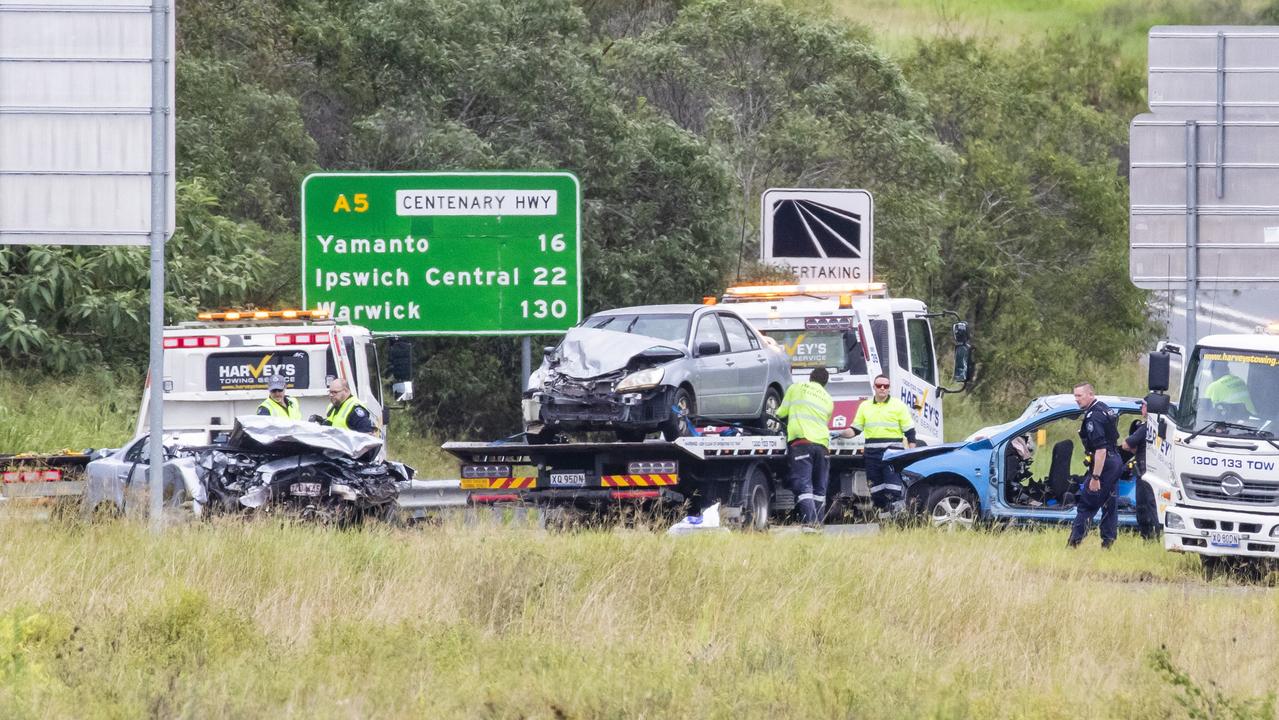Fatal Alaskan float-plane crash: How the tragedy could have happened
Father-of-two Simon Bodie, 56, from Sydney is one of six people killed when two seaplanes collided mid-air in Alaska. Now it’s been revealed he had a pilot’s license and asked for a front seat.
Australian tourist Simon Bodie has died after two sightseeing seaplanes collided mid-air in Alaska.
Alaska State Troopers confirmed on Tuesday that Mr Bodie, 56, from Tempe in Sydney’s inner-west, was one of six people killed in the horror crash.
Business strategist and father-of-two Mr Bodie left Sydney last week with his wife Stephanie to go on a cruise and decided to go on a joy ride when their ship docked in Alaska,
The Daily Telegraph reports.
Mr Bodie, a pilot, asked to be seated in the front of one of the seaplanes before tragedy struck.
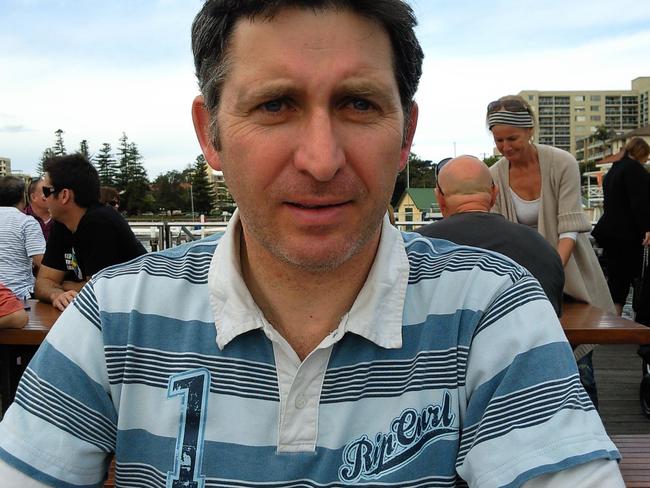
His brother-in-law James Gwynne, 49, said Mr Bodie’s daughter Aelish, 25, had just got engaged but will now have to plan a funeral instead of a wedding with her father.
“There were two sea planes which are both charter planes, the ship docked and you could have these excursions, Simon was a pilot,” Mr Gwynne told The Daily Telegraph.
“So unfortunately for Simon, he nominated to be in the front seat, not as a co-pilot, just sitting there and observing.
“It’s our understanding that he was in the smaller plane. Two planes took off and there was nothing untoward with weather, there was beautiful sunny skies and heading up to the fjords.
“We’re hearing there may have been an issue with the larger plane … Stephanie was on the (cruise ship).”
Australia’s Department of Foreign Affairs and Trade said it was providing consular assistance to his family.

The collision occurred when a larger de Havilland Otter DHC-3, carrying 10 passengers and the pilot, was returning from Misty Fjord and collided with a smaller DHC-2 Beaver.
Mr Bodie was believed to have taken the flight as part of a side trip from a cruise he was on along the Alaskan coast.
“The Australian unfortunately is one of the people confirmed deceased,” US Coast Guard Lieutenant Brian Dykens told AAP.
The nationalities of the people from both planes are 14 Americans, a Canadian and the Australian Mr Brodie.
The planes crashed into the icy cold waters off a southeast Alaska inlet near Ketchikan, a popular destination for cruise ships in Alaska.
A popular activity is flight seeing in Misty Fjords National Monument to view lakes, snow-capped peaks and glacier valleys in the wilderness area.
“We have been in regular contact with the family members throughout our search efforts,” US Coast Guard Captain Stephen White said.
“This is not the outcome we hoped for and extend our deepest sympathies during this very difficult time.”
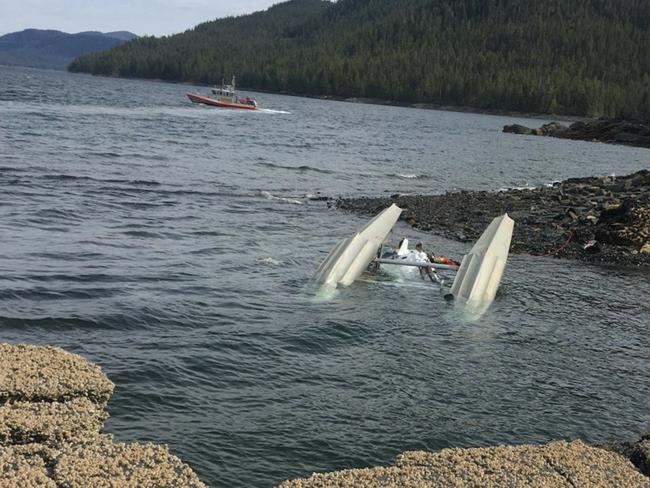
HOW THE TRAGEDY COULD HAVE HAPPENED
Rough terrain, erratic weather and the lack of radar and collision avoidance systems all contributed to the fatal collision between two float planes off Alaska, an aviation expert says.
Former investigator with the Transportation Safety Board of Canada Larry Vance told News Corp he felt it appeared “pretty obvious” the two aircraft struck each other in flight.
“That’s what brought both of them down,” he said.
More details of the accident would come to light once investigators spoke with survivors, he said.
But Mr Vance, author of MH370 Mystery Solved, believes the aircraft struck a glancing blow.

“One of the one of the aeroplanes — as it looks now — one of the aeroplanes went completely out of control and crashed. I think that the people who were on that aeroplane are the most likely to have not survived.
“The other aeroplane, it looks like it remained somewhat flyable — to the point where it didn’t crash completely out of control because there were so many survivors”.
Dive teams also plunged into the icy cold waters, searching an area the size of 24 football fields for two cruise ship passengers missing after two sightseeing planes collided.
The Royal Princess, which can carry up to 3600 people, was among four city-sized cruise ships in the tiny coastal community this week before the tourists took the flight seeing shore excursions before the crash happened.
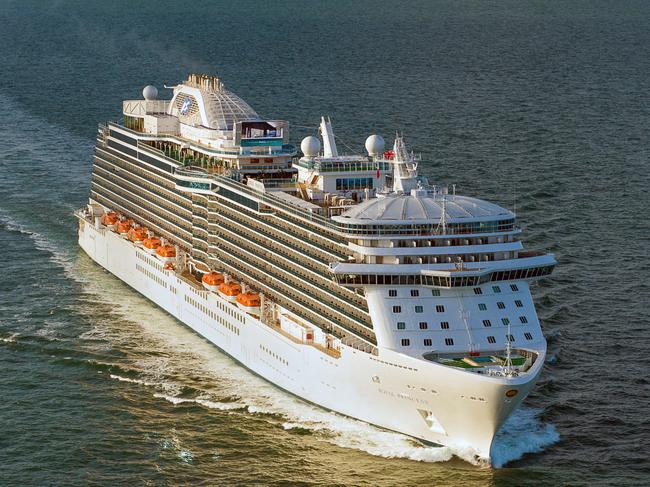
NO FLIGHT CONTROL
Alaska is enormous. And its inclement weather, along with numerous mountain ranges, makes low-level radar coverage virtually impossible.
Mr Vance said that the float planes would not have been operating under air-traffic control.
Instead, they would have been flying under local visual flight rules.
“This would be an area where the two aeroplanes would be flying. using visual flight rules. It’s basically an area where the separation between aeroplanes would be done by visual means. In other words, each of the pilots is responsible for keeping a good lookout. They should also have been on a common radio frequency where one would expect that they would have broadcast their positions and intentions.”
But he believes the cause of the accident will be quickly resolved.
Investigators should be able to use eyewitness and survivor accounts, and even video footage — given the common use of mobile phone video on such trips — to determine where each aircraft was in relation to each other before the crash.
“Obviously people take cell phone videos because the whole point of flight is to just fly around and have a look out the window,” he said.
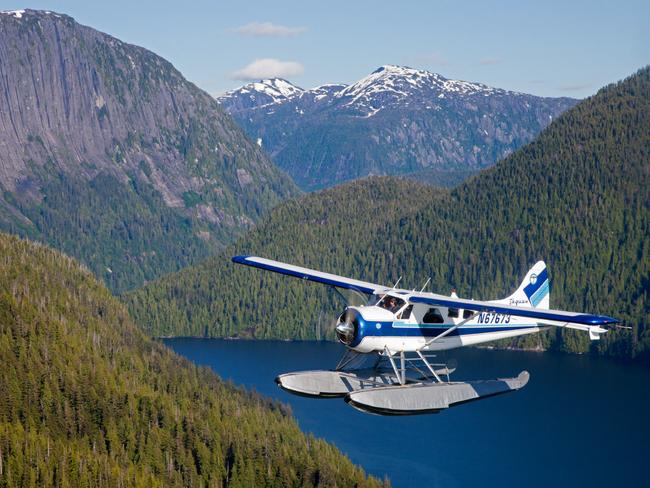
Mr Vance said tourist flights operating in remote areas usually combined to establish their own flight safety procedures — such as allocating different cruise heights and landing or takeoff approaches.
But these were not infallible.
The accident comes just months ahead of new US flight regulations aimed at preventing such collisions outside the scope of air traffic control.
The US Federal Aviation Administration will require all US aircraft to have tracking beacons installed called ADS-B. These will constantly emit signals that designate the aircraft’s height, speed and location. If other aircraft approach too close, it issues an alert.
All US aircraft will be required to have the system installed by January next year.
WHERE INVESTIGATORS CAN ALSO LOOK
As these planes do not have a flight data recorder, Mr Vance told News Corp Australia they could also look at the wreckage for GPS based navigation equipment, which has “volatile memory” which they can use to recreate the planes and their basic flight path and trajectory.
While the equipment is not crash protected, he said there was a memory chip inside that could be recovered.
Any information in it can then be downloaded by investigators.
Responders have begun to recover the wreckage of planes, according to federal accident investigators. The larger of the floatplanes was recovered and put on a barge to be transported to Ketchikan, National Transportation Safety Board member Jennifer Homendy said Wednesday. The NTSB has a team of investigators from Washington, D.C., at the scene.
The recovery of the smaller plane has begun and will take longer because of the large debris field from that aircraft, Homendy said.
CRUISE COLLISION
The US Coast Guard says the mid-air collision was between DHC-3T Otter and DHC-2 Beaver float-planes some 15km out of Ketchikan, in the Coon Cove area of George Inlet.
According to Princess Cruisers, the Otter was operated by Taquan Air.
The planes collided at about the 3,300-foot (1,005-metre) level.
The flight was reportedly returning from Misty Fjords National Monument, carrying ten Royal Princess passengers and a pilot. All are believed to have been American.
The second aircraft — a DHC-2 Beaver float-plane on an independent tour — was carrying four Royal Princess guests and a pilot. It went down nearby, in the Mahoney Creek area. Its passengers included two Americans, a Canadian and an Australian.
Three of the four fatalities were from this plane, with one from the Taquan flight.

Ten others survived the Monday crash over an inlet in southeast Alaska near the cruise ship port community of Ketchikan.
All 14 passengers were off the cruise ship Royal Princess, which is on a seven-day trip in Alaska. Alaska State Troopers identified the other passengers who died as 46-year-old Louis Botha of San Diego, 62-year-old Cassandra Webb from St. Louis, 39-year-old Ryan Wilk from Utah and 37-year-old Elsa Wilk of Richmond, British Columbia, Canada. Also killed was the pilot of one of the planes, 46-year-old Randy Sullivan of Ketchikan.
Taquan Air said the company has suspended flight operations while the crash is investigated.
“We are devastated by today’s incident and our hearts go out to our passengers and their families,” it said in a statement.
The second company is yet to be identified.
It’s not the first fatal accident in the region involving float planes.
In June 2015, the pilot and eight passengers from Holland America Line cruise ship were killed when their aircraft went down near Ketchikan, striking a granite rock cliff face.
The US National Transportation Safety Board determined that pilot error and lack of a formal safety program were among the causes.
Earlier, in 2007, two flights to Misty Fjord also resulted in fatalities.

PRIME SUSPECT
The circumstances of the crash are unknown, but the US National Transportation Safety Board has sent a rapid-response “Go Team” of investigators to the scene.
The weather forecast for the day of the accident included overcast skies with southeast winds gusting at 14 kilometres per hour.
Alaskan weather can be deceptive, and deadly, according to the cruisecritic.com.au website.
“Mountainous terrain and treacherous weather that can change in an instant are the most common reasons planes crash in Alaska,” it reads.
“Ketchikan, the closest city to Misty Fjords, averages 153 inches of annual rainfall. Vast stretches of the Inside Passage, where most cruise ships go, travel near Tongass National Forest, which is a 17-million-acre temperate rainforest — emphasis on rain. Adverse weather conditions can also happen in Denali, where the mountain is often shrouded in clouds, and Juneau, which has dangerous wind shears.”
Weather is also the prime suspect for pilot and Seaplane Pilots Association director Steve McCaughey: “They call it Misty Fjords for a reason”.
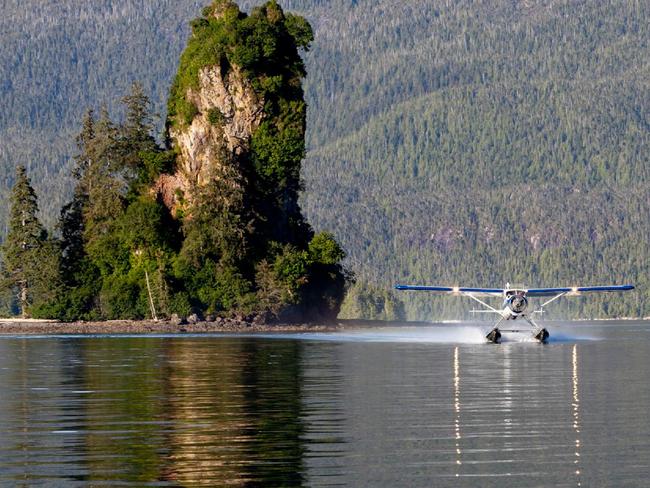
LIFE ON THE WING
It is supposed to be the best and most convenient way to see Alaska’s pristine wilderness. And the fact the aircraft landed on floats makes it all the more exciting. But the fatal collision that killed an Australian man and three others highlights the challenges of life on the frontier.
Float planes are a common sight in Alaska.
The rugged terrain makes the many lakes, creeks and fjords the most obvious runway. There simply isn’t all that much flat, clear ground for a traditional concrete strip.
And even roads can’t link most of the majority of Alaska’s cities and town.
So float planes and helicopters — many of them privately owned — are constantly flitting about, carrying grocery shopping, passengers — and tourists.
Almost every Alaskan port offers the service.
It’s a quick, easy and effective way of getting sightseers to otherwise inaccessible — but spectacular — natural terrain. And given the sheer number of flights, the accident rate is very low.
It would have been an easy, obvious choice for the passengers aboard the Royal Princess.
There is little other option when it cames to viewing the Misty Fjords national park, especially when visiting via a limited stopover cruise.
- with AAP


